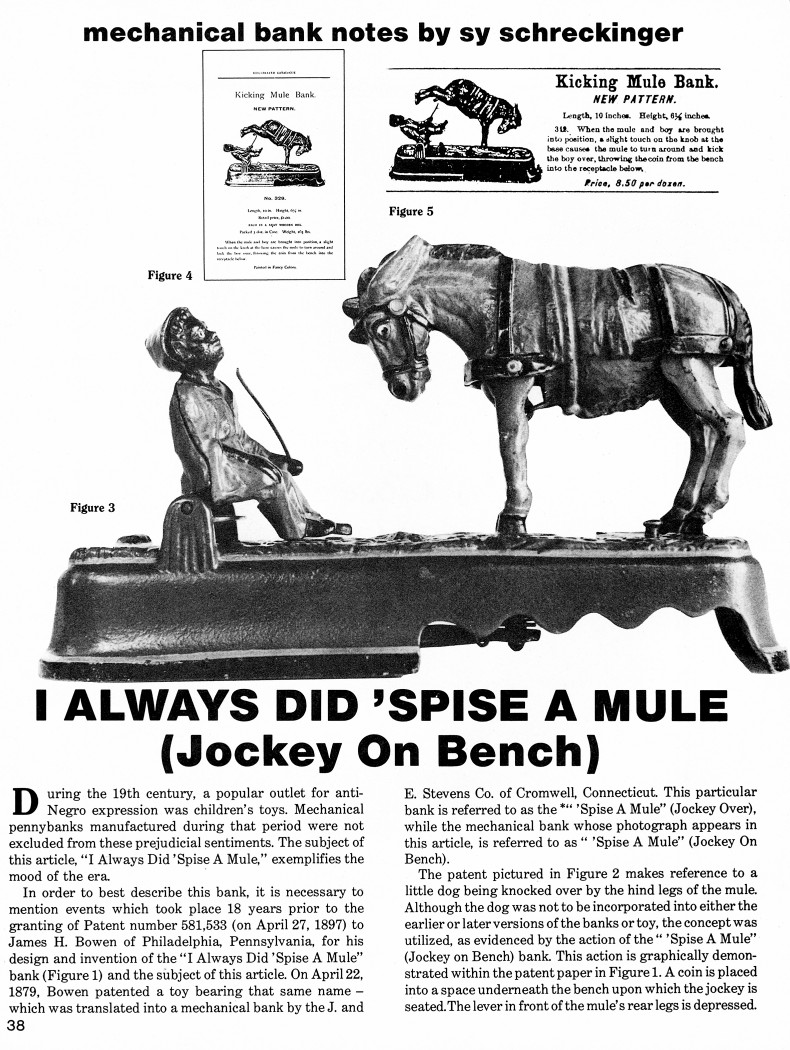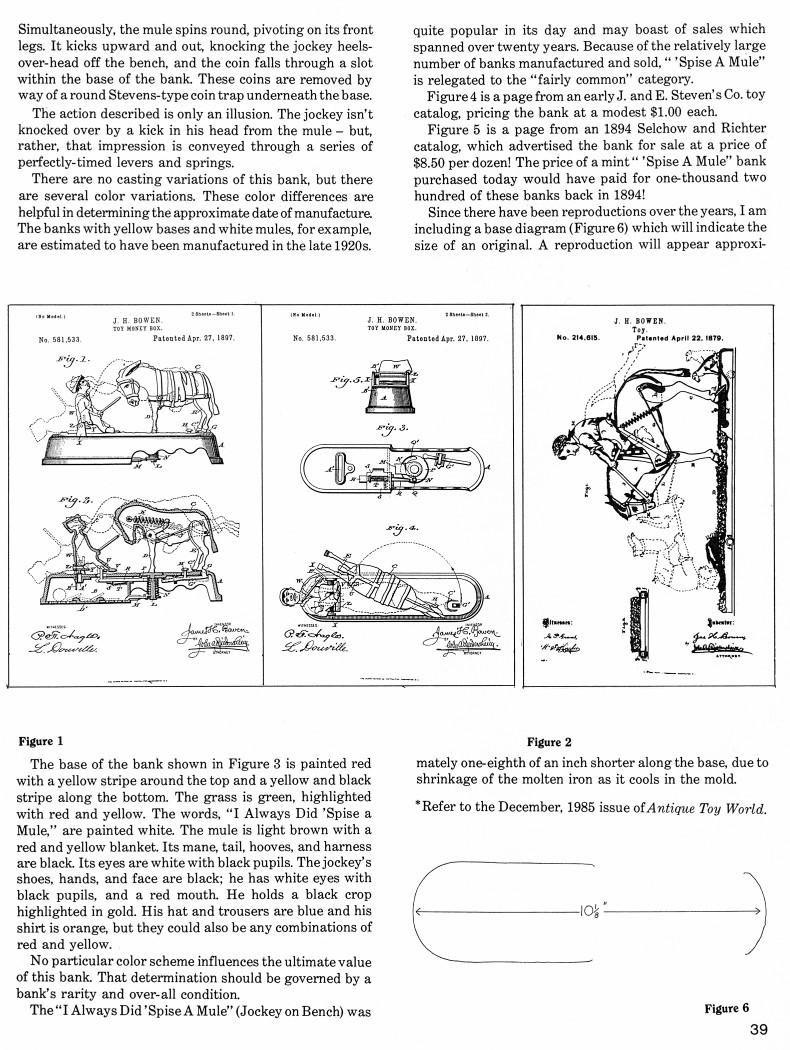|
I
Always Did 'Spise A Mule
(Jockey On Bench)
by Sy Schreckinger – ANTIQUE TOY WORLD Magazine – May, 1986
During the 19th
century, a popular outlet for anti-Negro expression was children's toys.
Mechanical penny banks manufactured during that period were not excluded
from these prejudicial sentiments. The subject of this article, "I Always
Did 'Spise A Mule," exemplifies the mood of the era.
In order to best describe this bank, it is necessary to mention
events which took place 18 years prior to the granting of Patent number
581,533 (on April 27, 1897) to James H. Bowen of Philadelphia,
Pennsylvania, for his design and invention of the "I Always Did 'Spise A
Mule" bank (Figure 1) and the subject of this article. On April 22, 1879,
Bowen patented a toy bearing that same name — which was translated into a
mechanical bank by the J. and E. Stevens Co. of Cromwell, Connecticut.
This particular bank is referred to as the *" 'Spise A Mule" (Jockey Over),
while the mechanical bank whose photograph appears in this article, is
referred to as " 'Spise A Mule" (Jockey On Bench).
The patent pictured in Figure 2 makes reference to a little dog being
knocked over by the hind legs of the mule. Although the dog was not to be
incorporated into either the earlier or later versions of the banks or
toy, the concept was utilized, as evidenced by the action of the " 'Spise
A Mule" (Jockey on Bench) bank. This action is graphically demonstrated
within the patent paper in Figure 1. A coin is placed into a space
underneath the bench upon which the jockey is seated. The lever in front
of the mule's rear legs is depressed.
Simultaneously, the mule spins round, pivoting on its front legs. It
kicks upward and out, knocking the jockey heels over-head off the bench,
and the coin falls through a slot within the base of the bank. These coins
are removed by way of a round Stevens-type coin trap underneath the base.
The action described is only an illusion. The jockey isn't knocked
over by a kick in his head from the mule – but, rather, that impression is
conveyed through a series of perfectly-timed levers and springs.
There are no casting variations of this bank, but there are several
color variations. These color differences are helpful in determining the
approximate date of manufacture. The banks with yellow bases and white
mules, for example, are estimated to have been manufactured in the late
1920s.
The base of the bank shown in Figure 3 is painted red with a yellow
stripe around the top and a yellow and black stripe along the bottom. The
grass is green, highlighted with red and yellow. The words, "I Always Did
'Spise a Mule," are painted white. The mule is light brown with a red and
yellow blanket. Its mane, tail, hooves, and harness are black. Its eyes
are white with black pupils. The jockey's shoes, hands, and face are
black; he has white eyes with black pupils, and a red mouth. He holds a
black crop highlighted in gold. His hat and trousers are blue and his
shirt is orange, but they could also be any combinations of red and
yellow.
No particular color scheme influences the ultimate value of this
bank. That determination should be governed by a bank's rarity and overall
condition.
The "I Always Did 'SpiseA Mule" (Jockey on Bench) was quite popular in its
day and may boast of sales which spanned over twenty years. Because of the
relatively large number of banks manufactured and sold, "'Spise A Mule" is
relegated to the "fairly common" category.
Figure 4 is a page from an early J. and E. Steven's Co. toy catalog,
pricing the bank at a modest $1.00 each.
Figure 5 is a page from an 1894 Selchow and Richter catalog, which
advertised the bank for sale at a price of $8.50 per dozen! The price of a
mint" 'Spise A Mule" bank purchased today would have paid for one-thousand
two hundred of these banks back in 1894!
Since there have been reproductions over the years, I am including a
base diagram (Figure 6) which will indicate the size of an original. A
reproduction will appear approximately one-eighth of an inch shorter along
the base, due to shrinkage of the molten iron as it cools in the mold.
*Refer to the
December, 1985 issue of Antique Toy
World.
|


